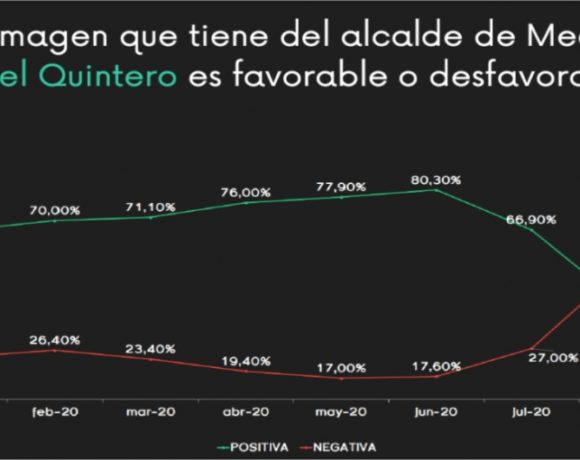‘Colombia El Pais de Los Extremos’ Helps Explain Antioquia’s Domination of Business, Industry, Entrepreneurship, Self-Reliance — Nationally and Internationally

“Colombia El Pais de los Extremos” (Colombia the Nation of Extremes) is Ecuadorian diplomat-scholar Eduardo Durán-Cousín’s new, 783-pages-long history and analysis of more than 500 years of Colombia’s cultural, social, economic and political triumphs and tragedies.
For any foreigner sufficiently fluent in Spanish and trying to understand why Colombia in several key ways is more like — but simultaneously also more un-like — the United States than any other Latin American country, “Colombia El Pais de los Extremos” (La Carreta Editores, published in Medellin, September 2020) can be useful, as it’s the most recent scholarly work here — widely reviewed in the Colombia mainstream media (and now, here, in Medellin Herald).
The book’s early chapters recount the European-biased observations of Spanish explorers, priests and conquerors about the existing and highly diverse aboriginal peoples here — some of them relatively peaceful, pastoral, even submissive tribes, others (especially in Antioquia) more interested in trade and commerce, while still other tribes – and later-on, through their inter-mingled Spanish/native descendants — practicing unimaginable savagery, conquests and even cannibalism.
The book’s most controversial (and racist) speculations about Colombia’s pre-and-post-Spanish-conquest-peoples include sections positing the notion that DNA and customs of the most savage tribes here later infected and subconsciously provoked incredibly bloody savagery by many current and past guerrillas, political armies and gangster groups here. One can only wonder what was in the pipe, smoking, when these paragraphs were written, given the horrific history of the entire human race (Nazis and Auschwitz, for example?)
But leaving aside dubious speculations about the origins of Colombian savagery, more important and more revealing is Durán-Cousín’s recounting of the central importance of the people of Medellin and Antioquia for dominating national (and even international) industry and commerce, even with the physical shifting or duplication of some local, foundational factories and some national administrative offices from Medellin to demographically bigger Bogota in recent decades.
As Durán-Cousín writes in the book’s first words about Antioquia, “the proverbial entrepreneurial spirt of Colombians, facilitated by the chronic absence of a strong central government, began in Antioquia and from there, by example and by migration of Antioquian people, irradiated throughout the country” — a phenomenon especially apparent in the second half of the 20th Century.
Even more remarkably, in the latter part of the 19th Century, Medellin not only became the most important industrial city in Colombia, but also the most important manufacturing center in all of northern South America, Durán-Cousín points out, citing numerous sources.
Citing (for example) noted Colombian economic historian Salomon Kalmanovitz, Durán-Cousín recounts several crucial factors explaining why the “paisas” (the people of Antioquia) have dominated Colombian commerce and industry.
First came profitable gold mining here, then banking, then coffee exporting, then the rise of supporting industries (textiles, foundries, manufactures) –all crucially undergirded by the entrepreneurial, industrious customs of a particular sub-group of mainly Spanish descendants, many of them with Jewish cultural roots (although most forcibly converted to Catholicism during and after the mass expulsions and persecutions by the Spanish Inquisition starting 500 years ago and continuing for centuries afterward).
Notable also is that such historic discrimination and persecution continued in Colombia even right up until the early 19th Century in the Caribbean coastal city of Cartagena — distant from the relatively safe, remote mountains of Antioquia, where if one so desired, one’s past could be more easily hidden, ignored, downplayed, low-keyed or forgotten, which helped to open doors to new freedom and opportunity (as some of Colombia’s greatest novelists likewise have illustrated).
What’s more, a peculiar flavor of Catholicism –mainly practiced here in Antioquia– is much more inclined to accept financial success as not inconsistent with spiritual salvation, Durán-Cousín notes.
As such, one can see parallels to the North American historical experience — where countless industrious people escaping European persecutions and prejudices likewise found freedom, opportunity and prosperity in the New World.
However, Antioquia — with few exceptions — mostly avoided the poisonous, debilitating, dehumanizing and lethargy-inspiring crime of African slavery that has scarred, wrecked and ruined so much of an otherwise “freedom-loving” USA – even right up to today. A shameful history linked to a hypocritical kind of “Christian” prosperity where even slavery got trumped-up Biblical excuses and exemptions.
In contrast, the growth of a huge middle class of Antioquian entrepreneurs here – NOT employing slavery – came via the coffee boom of the 19th and 20th centuries, starting in Antioquia and expanding to neighboring departments.
This self-sufficient, entrepreneurial idiosyncrasy is at the core of what makes a “paisa,” Durán-Cousín notes – and this resonates among vast portions of the North American population as well.
But while one can find correlations between many paisas and many North Americans, contradictions also exist, although some of these have been overcome through time, the book shows.
For example: U.S.-Colombian relations were strained with the secession more than 100 years ago of the former Panama province from the nation of Colombia. But the book notes that Panamanians overwhelmingly favored that separation, for both economic and political reasons, starting with the historical negligence of Colombia’s central government toward outlying provinces.
But ever since the Colombia Congress in 1923 ratified the Urrutia-Thompson Treaty that required the U.S. government to compensate Colombia for the Panamanian secession, Colombia has maintained particularly strong political, economic and military-aid ties with the U.S., much to the consternation of pro-Soviet, pro-communist and other left-wing politicians.
However, despite these cold-war and post-cold-war era political conflicts, as well as the “La Violencia” civil war of 1948 to 1958 and the subsequent FARC, ELN and M-19 guerrilla terrorism, Colombia’s other, prior, centuries-long political struggles – triggering frequent, bloody civil wars –weren’t fought along class lines (peasant versus landlord, worker versus capitalist), Durán-Cousín notes.
Rather, these wars were mainly between the “elites-dominated” Conservative and Liberal Parties — conflicts that came to an end following the brief military government of General Rojas Pinilla at the end of the “La Violencia” conflict of the 1950s, the book notes.
Then, in 1991, Colombia enacted a new, modernized, liberal Constitution, which triggered the decline of the old Liberal and Conservative Parties and gave rise to a multiplicity of new parties of various ideological stripes and of “charismatic” leaders.
In some respects, today’s non-violent political battles in Colombia are similar to the non-violent political battles between Democrat and Republican Parties in the U.S., at least following the end of the U.S. Civil War of 1860-1865.
Unfortunately, like so many other Latin American historic and sociological treatises, Durán-Cousín’s “Colombia El Pais de los Extremos” book falls into a familiar trap of lamenting the absence here of a strong, unified, class-based social-democratic “left” party that would compete for votes with a more traditional, capitalist-oriented conservative party.
Supposedly, a strong social-democrat party here arguably would have provided an alternative to the violent communist guerrilla movements, which (falsely) were claimed to have arisen because of “oppression” and “lack of democracy” in Colombia. In fact, Colombia’s democracy is more than 200 years old, and left-wing currents (and several coalition governments) have long been a part of the Liberal Party, although centrist and rightist factions frequently dominated among the Liberals. Social-democrat factions also have existed in the Conservative Party and in its various coalition governments, the book shows.
On the other hand, Durán-Cousín correctly observes that Colombia’s relatively violent political history has mainly been a competition between some well-off elites, supported by the majority of poorer populations, with the poor used as cannon-fodder in the many civil wars.
Yet history shows that the same cynicism is just as true of the FARC and other communist, extreme leftist, narco-communist and paramilitary gangsters here, all of whom have sought to overthrow or manipulate the existing capitalist elites and replace them or sabotage them with crypto-capitalists — communist and narco-gangster dictatorial power — rather than bring about any real “social justice.”
In his proposed recipes for reform, Durán-Cousín also unfortunately repeats the old canard that what Colombia really needs is “land reform” that supposedly would end the injustice of relatively few big landholders “misusing” their landholdings and preventing poor peasants from getting a bigger piece of the land pie.
First problem with this argument: agricultural producers need profitable products from land, not just bigger areas of land.
Second problem: Splitting up big haciendas into smaller parcels — supposedly to benefit hundreds of thousands or millions of mainly rural residents – wouldn’t automatically yield profits from that land — and may do the opposite, by imposing smallholder inefficiencies.
Which is why coca and cocaine have conquered vast acreages among Colombia’s small farmers (not the big haciendas), as “white powder” is far more profitable than “land reform.” And which explains why thousands of FARC militants since have abandoned the 2015 “peace treaty” and gone back to cocaine trafficking, murder and extorsion — as these are more profitable than conventional subsistence farming or the fantastical idea of “land reform.”
Correctly, Durán-Cousín laments the historic fragmentation of Colombia — caused by weak central government, a mountainous, isolated terrain and very poor roads compared to its neighbors — which helps explain the historic rise of warlord guerrilla armies and violent political competitions.
But he gets the solution wrong, by proposing the elevation of a stronger, unified left-wing party to counter the power of the existing conservative “elites” and thus supposedly expanding social justice, peacefully.
Ironically, the one Colombian President who did more than all others in the entire history of the country to boost social progress, economic progress, reduce isolation and diminish narco-terrorist violence wasn’t a “left” or “right” President.
Just the opposite.
Instead, this uniting President was Alvaro Uribe Velez, a thoroughly centrist politician — a rather steelier version of incoming centrist U.S. President Joe Biden — who won the hearts and minds of a huge majority of all Colombian social classes and regions, twice.
The only Colombian President in history who spent his weekends during his two terms traveling to every small town and village in every corner of the country, listening to ordinary people (not elites), promoting and elevating Colombia as one nation, one people, one democracy, seeking greater economic, political and social progress. And suffering numerous assassination attempts in the process.
The only President who virtually destroyed the FARC militarily and potentially paved the way for a future “peace” agreement that some day might actually achieve real, laudable goals, rather than the current “peace” mess that hasn’t stopped guerrilla violence, corruption or massive narco-trafficking.
Likewise, the only President who without fear welcomes face-to-face debate with Colombia’s leftist extremists — including angry students and demagogic politicians.
The one politician who put country above class or ideology, at the risk of his own life. But also the one that Durán-Cousín terms in the book as a “clientelist” politician, like something in the mode of a “caudillo.”
Erroneous again.
Uribe — unlike typical banana-republic strongmen, or hate-spewing, demagogic, reactionary hucksters like outgoing U.S. President Donald Trump – is a through-and-through democrat, unafraid of losing any election and unflinching in the face of continuing persecutions by corrupt judges, ideological extremists and jealous political rivals of various stripes.
Which is exactly what Colombia has always needed — not “land reform,” or demagogues, or a “stronger left-wing party” as Durán-Cousín suggests. Instead, what Colombia needs is more centrists, more moderates, more unifiers, more reformers, more investors, more middle-class people, more kind, decent and ethical people, more educated people, more entrepreneurial people and more democrats (with a small “d”).
















